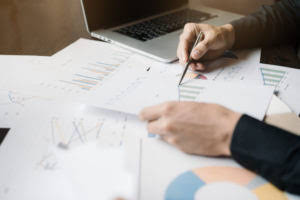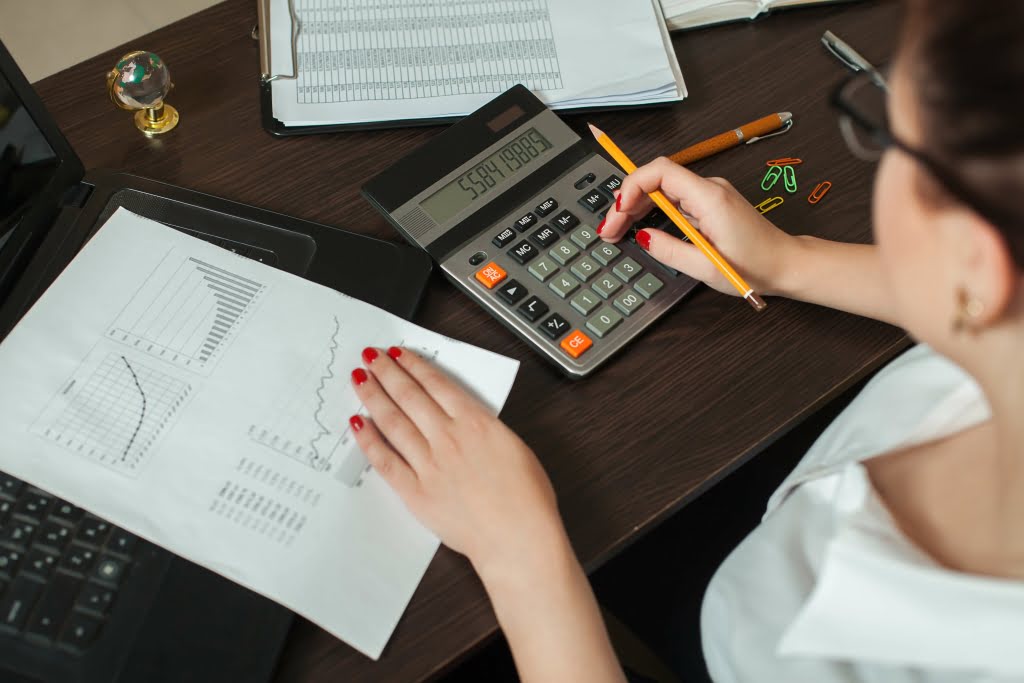Content
Each of the three segments on the balance sheet will have many accounts within it that document the value of each. Accounts such as cash, inventory, and property are on the asset side of the balance sheet, while on the liability side there are accounts such as accounts payable or long-term debt. The exact accounts on a balance sheet will differ by company and by industry. The quick ratio is a calculation that measures a company’s ability to meet its short-term obligations with its most liquid assets. Current assets represent all the assets of a company that are expected to be conveniently sold, consumed, used, or exhausted through standard business operations with one year.
- Examples These assets have included cash, bank balance, sundry debtors, inventory, or prepaid expenses.
- A balance sheet summarizes an organization’s or individual’s assets, equity and liabilities at a specific point in time.
- However, inventory may require several months to be sold and the money collected.
- Finally, their presence directly improves the company’s ability to seek additional financing.
- Cash can include the amount of money a company has on hand and any money currently stored in bank accounts.
- The financial statement prepared first is your income statement.
Current assets are important to businesses because they can be used to fund day-to-day business operations and to pay for the ongoing operating expenses. The organization of assets on a balance sheet based on how long the asset will take to liquidate.
Financial StatementFinancial statements are written reports prepared by a company’s management to present the company’s financial affairs over a given period . Unclassified balance sheets are usually used for internal purposes only. Managers and owners use unclassified balance sheets to gauge performance and business standings. Since an unclassified balance sheet is easier and faster to create, management can have one drafted much faster than an unclassified balance sheet. The following balance sheet is a very brief example prepared in accordance with IFRS. It does not show all possible kinds of assets, liabilities and equity, but it shows the most usual ones.
Merchandise Inventory
Each ratio uses a different number of current asset components against the current liabilities of a company. That presents the company’s assets, liabilities, and owners’ equity at a particular point in time, thereby providing insights into an entity’s financial position. Assets are listed in the balance sheet in order of their liquidity where cash is listed at the top as it’s already liquid no conversion is required. The next in the list are marketable securities like stocks and bonds, which can be sold in the market in a few days generally the next day can be liquidated.
- In practice, the most widely used title is Balance Sheet; however Statement of Financial Position is also acceptable.
- On a balance sheet, liabilities are typically listed in order of shortest term to longest term, which at a glance, can help you understand what is due and when.
- In other words, a liquid asset can be quickly sold on the market without a significant loss of its value.
- Since short term liabilities are to be cleared at short notice, we use assets that can be speedily converted to cash to clear the short term liabilities.
- Assets are arranged in order of liquidity–how quickly they can be turned into cash.
That specific moment is the close of business on the date of the balance sheet. A balance sheet is like a photograph; it captures the financial position of a company at a particular point in time. As you study about the assets, liabilities, and stockholders’ equity what is order of liquidity contained in a balance sheet, you will understand why this financial statement provides information about the solvency of the business. Also known as the «acid test» ratio, this is a refinement of the current ratio and is a more conservative measure of liquidity.
What Are Non Current Assets Give Two Examples?
An income statement is one of the most basic but necessary accounting documents for any company. Learn what income statements are, their purpose, and examine their components of revenue and expenses. Long-term liabilities are any debts that must be repaid more than one year from the date of the balance sheet.
PointClickCare Technologies Inc. — Moody’s downgrades PointClickCare to B2; outlook negative – Yahoo Finance
PointClickCare Technologies Inc. — Moody’s downgrades PointClickCare to B2; outlook negative.
Posted: Mon, 14 Feb 2022 18:34:05 GMT [source]
This indicates the company’s ability to repay business debt with cash and cash-equivalent assets, i.e., inventory, accounts receivable and marketable securities. A higher ratio indicates the business is more capable of paying off its short-term debts. These ratios will differ according to the industry, but in general between 1.5 to 2.5 is acceptable liquidity and good management of working capital. This means that the company has, for instance, $1.50 for every $1 in current liabilities. Lower ratios could indicate liquidity problems, while higher ones could signal there may be too much working capital tied up in inventory. A company can be endowed with assets and profitability but short of liquidity if its assets cannot readily be converted into cash.
Marshalling Of Assets And Liabilities : Order Of Liquidity
Current assets appear on a company’s balance sheet, one of the required financial statements that must be completed each year. Stocks and other investments that can be sold in a few days are usually next. Money owed to the business through normal sales is considered by the company’s sales terms, so receivables may have a 30- or 60-day liquidity, for example. Inventory might take a month or two to be converted through turnover and sales.

You’re a lot closer to cash with a receivable than you are with an item sitting in your inventory. There’s no real equivalent for inventory; the amount reported on the balance sheet is the value of what’s sitting in inventory, whether you can sell it or not. There are four company financial statements that are important to a company’s financial reporting.
What Are Current Liabilities?
Current assets include cash and other assets that in the normal course of events are converted into cash within the operating cycle. For example, a manufacturing enterprise will use cash to acquire inventories of materials. These inventories of materials are converted into finished products and then sold to customers.
ye kinda how i deal with week-end, what is ore hard to deal with is the patience you need to have those 400/500 points, on weekly it's gona be fast, high liquidity, a lot of spa market order, on week-end eh, one setup scalp can be long and being stuck
— Mārūsha (@mattomattik) February 12, 2022
For assets, the value is based on the original cost of the asset less any depreciation, amortization or impairment costs made against the asset. Property, plant, and equipment normally include items such as land and buildings, motor vehicles, furniture, office equipment, computers, fixtures and fittings, and plant and machinery. These often receive favorable tax treatment over short-term assets. Balance sheet substantiation is an important process that is typically carried out on a monthly, quarterly and year-end basis. The results help to drive the regulatory balance sheet reporting obligations of the organization. Historically, substantiation has been a wholly manual process, driven by spreadsheets, email and manual monitoring and reporting. In recent years software solutions have been developed to bring a level of process automation, standardization and enhanced control to the substantiation or account certification process.
What Are Business Assets?
For assets, the value is based on the original cost of the asset less any depreciation, amortization, or impairment costs made against the asset. An asset’s initial book value is its its acquisition cost or the sum of allowable costs expended to put it into use.

When creating a financial statement in order to reverse liquidity which type of asset is listed… Equipment is not considered a current asset even when its cost falls below the capitalization threshold of a business. Short-term liquidity issues can lead to long-term solvency issues down the road. It’s important to keep an eye on both, and financial ratios are a good way to track liquidity and solvency risk.
Generally, profitability is expressed as the proportion between profit and the sum of invested capital. Brainyard delivers data-driven insights and expert advice to help businesses discover, interpret and act on emerging opportunities and trends. Contact a qualified business attorney to help you address the finances vital to your business. Meeting with a lawyer can help you understand your options and how to best protect your rights. Visit our attorney directory to find a lawyer near you who can help.
- Companies often need, at the very least, a few months in order to convert their inventory to cash depending on the market and the skills of their sales team.
- These assets are also very important to a business’s overall production, therefore companies often wait to sell these items unless there is an emergency need for cash.
- Excel Shortcuts PC Mac List of Excel Shortcuts Excel shortcuts – It may seem slower at first if you’re used to the mouse, but it’s worth the investment to take the time and…
- Of course, fixed assets will vary considerably and depend on the business type , size, and market.
- It is a derivation of working capital, that is commonly used in valuation techniques such as discounted cash flows .
- Current assets include everything that a company can convert into cash the fastest including, cash, marketable securities, accounts receivable and inventory.
For instance, cash would be listed at the top and then would be followed by any other asset that could quickly be turned into cash. This ratio expresses the relationship between capital contributed by creditors and that contributed by owners.
The amount realized by this is used to pay off the creditors and all other liabilities of the business in a specific order. Accounts Receivable – Amount due from the customers of the firm or organization for which goods/services have been provided, and the bill has been raised, but the amount is due to be collected.

Cash, receivables, and liabilities on the Balance Sheet are re-measured into U.S. dollars using the current exchange rate. Balance sheets are usually prepared at the close of an accounting period, such as month-end, quarter-end, or year-end.
